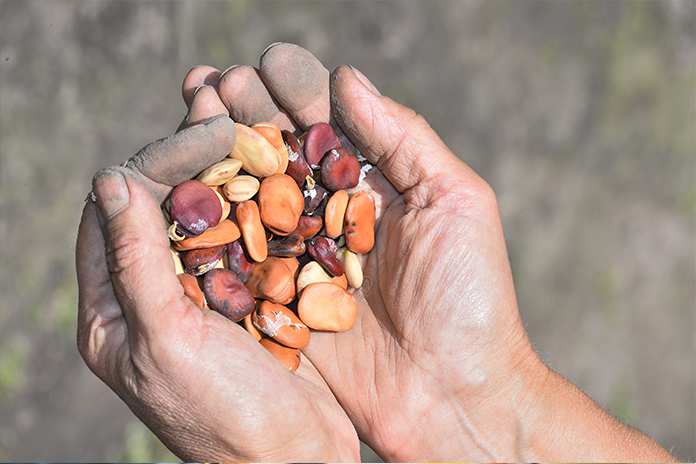In recent months I’ve been asked several times about lectins. These proteins found in almost every food substance, were never on my “do not eat” list unless an individual was addressing an auto-immune condition. The sudden influx of concerned inquiries, however, challenged me to dive deeper into the lectin information well. The result is this two-part article, the first part of which briefly explained what lectins are and how pervasive they are in all the foods we eat. This second installment focuses on how to reduce the number of lectins we consume through traditional preparation and cooking methods.
Read Lectins Part I The Good The Bad The Confusing
Throughout the ages civilizations figured out ways to make food sources more digestible. Soaking, fermenting, and sprouting are all preparation techniques that neutralize undesirable effects of plant foods. Today, the importance of these methods is dismissed. They are deemed unnecessary or too time consuming for our convenience oriented modern lifestyle. Consequently, we often consume more lectins than our bodies can handle which can contribute to poor health. Below are some of age-old food preparation methods that help neutralize the negative effects of lectins.
Sprouting
There was time when humans grew grains in relatively small fields for personal or local use. With so much effort required to grow and grind grains, humans just didn’t eat as much of them. Now with industrial farming methods, we have an obscene amount of grains and grain based products at our fingertips. We consume them in proportion to their availability—in massive amounts. Unfortunately, most modern grain products are not prepared to mediate potential toxic effects of lectins and other non-digestible proteins.
Grains were traditionally sprouted to break down the toxic protective coating surrounding the germ. This process makes grains more easily digestible and boosts nutritional value. Grain lectins are concentrated in the seed coating. When some types of grains are soaked and sprouted, this toxic coating is metabolized and disappears. This process varies according to the grain, however. Wheat is one of the grains that retains the lectins even after sprouting. Individuals highly sensitive to lectins should avoid grains altogether.
Peeling and Seeding
While researching this topic I learned that tomatoes were believed to be poisonous in16th century northern Europe. Brought to Europe from Mesoamerica by the conquistadors, tomatoes were grown ornamentally and not consider fit to eat for a long time after their introduction. Perhaps Europeans were intolerant of the lectins in tomatoes (and other nightshades for that matter) leading to the belief that tomatoes were harmful. If we think about it, many of the traditional ways of preparing tomatoes and other nightshades involved peeling and deseeding the fruit. It is no coincidence that lectins are concentrated in fruit skins and seeds.
Soaking
Legumes contain concentrated levels of lectins, yet they are staple foods of many cultures. Could you imagine Mediterranean and middle eastern cooking without garbanzo beans and lentils? Of course, there are proper preparation methods that make these staple foods safe to consume daily. Soaking for eight or more hours and changing the water a few times is the best way to reduce lectins in legumes. Cooking at high temperature further reduces lectin levels. The best methods is to drain and rinse after soaking then cook over high heat for 15 minutes. You can then reduce the temperature for the remains cooking time. Pressure cooking is also an effective way to reduce legume lectin levels.
Fermenting
Fermented grain products, vegetables, and fruit are found in every culture’s traditional foods. If you’ve eaten sourdough bread or sauerkraut and pickles, you’ve experienced fermented foods. The fermentation process breaks down lectin proteins and other anti-nutrients in grains. Lectins in vegetables are reduced when fermented and the resulting lactic acid serves as a preservative to allow foods to last.
Cooking
Not all foods are healthiest when eaten raw. Take goji berries for example. They are touted as a powerful superfood, which they are, but goji berries are in the nightshade family and full of lectins. Goji berries are a major player in many Chinese herbal formulas and in traditional cooking. However, they are not commonly eaten raw. They are brewed in teas and stewed in broths. Cooking reduces the undesirable effects associated with high lectin levels and allows superfood qualities to shine.
Did you know that shellfish contain lectins, too? Traditional Japanese cooking methods employ certain seaweeds to solve this problem. Kombu and other seaweeds are known to bind lectins not allowing them to attach to the intestinal wall. Hence the toxicity of shellfish is neutralized.
Summary
Today we just don’t take time to soak, sprout, ferment and slow-cook our food, which puts us at higher risk of poor gut health and systemic inflammation. Even the healthiest of us can suffer ill effects from concentrated lectin consumption. It is worth managing the amounts lectins you consume by preparing or sourcing foods prepared by traditional methods. Not all lectins are destroyed by the above methods. Individuals who already suffer auto immune problems should avoid all lectins. For most of us, however, the negative effects of remaining lectins are offset by the foods’ positive value.
To Schedule an Appointment
Please call our office or click the button below
(760) 652-9585

Leave a Reply